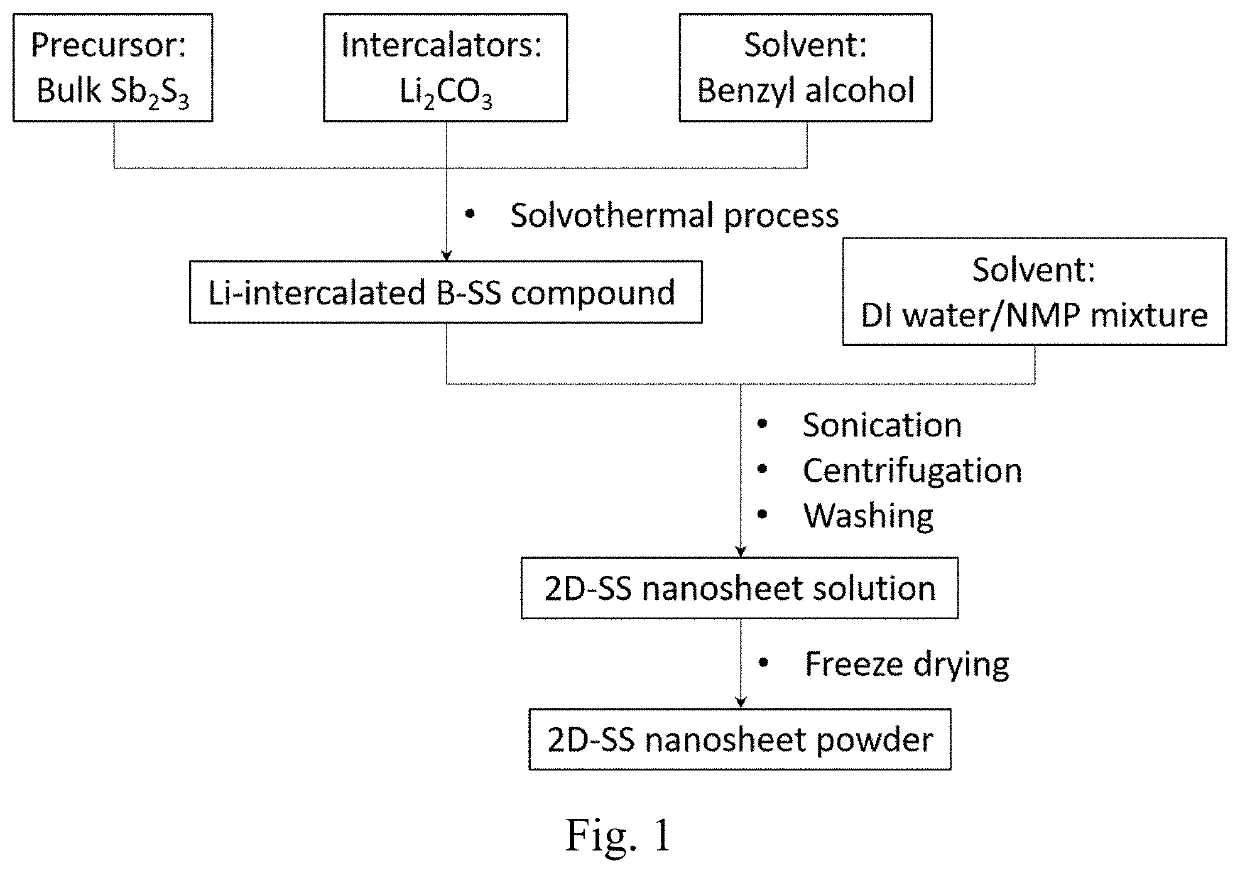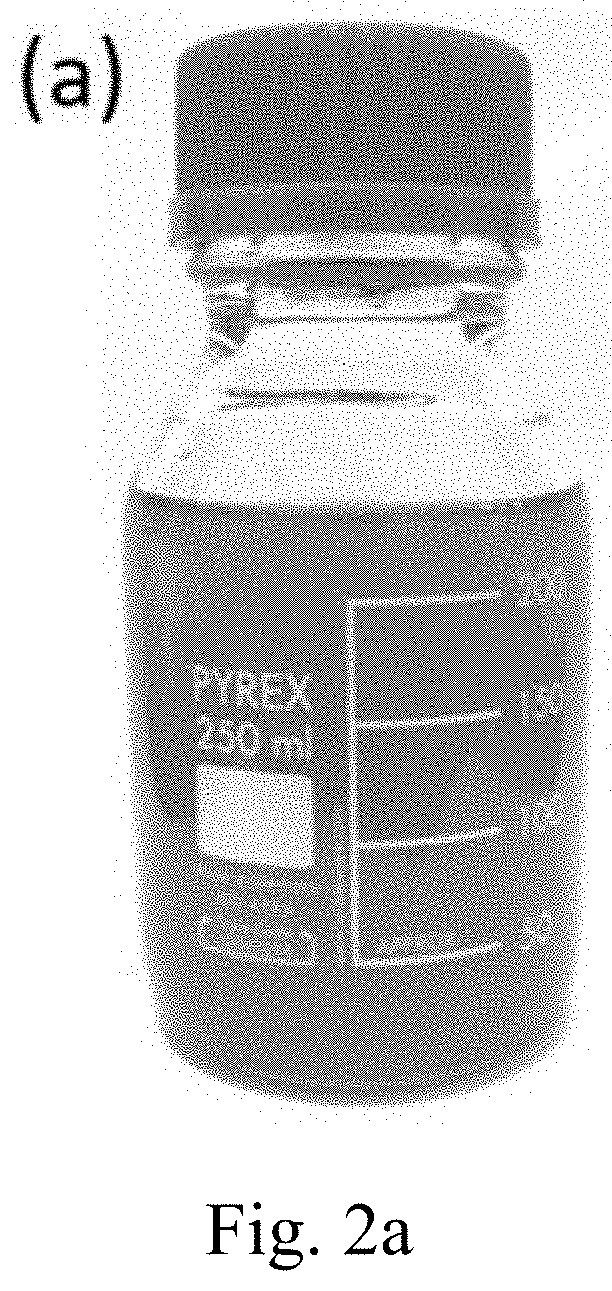PREPARATION METHOD FOR ULTRATHIN SB2S3 NANOSHEET AS ANODE MATERIAL FOR Li/Na ION BATTERY APPLICATIONS
a technology of li/na ion battery and nanosheet, which is applied in the manufacturing process of electrodes, cell components, electrochemical generators, etc., can solve the problems of sharp increases in the price of precursor materials and severe hindering the future use of libs
- Summary
- Abstract
- Description
- Claims
- Application Information
AI Technical Summary
Benefits of technology
Problems solved by technology
Method used
Image
Examples
example 1
of 2D-SS Nanosheets
[0043]In step 1, the simple and scalable solvothermal method is adopted to prepare Li-intercalated Sb2S3 (Li-B-SS) macroparticles. Bulk Sb2S3 powders are used as the precursor for exfoliation and Li2CO3 salt is served as the intercalating agent. The solvothermal solution is prepared by adding 0.1 g bulk Sb2S3 (B-SS, which can be supplied by Aldrich) and 0.7 g lithium carbonate (Li2CO3, which can be supplied by Aladdin) in 40 ml benzyl alcohol (which can be supplied by Sigma-Aldrich) by magnetic stirring for 0.5 h at room temperature (RT). Then, the resulting mixture is transferred to a 50 ml poly (p-phenylene)-lined stainless steel autoclave, sealed and heated to 220° C. for 48 h. Upon cooling to RT after the solvothermal process, the final solid product is collected after centrifugation at 12,000 rpm for 20 min. The product is further washed with acetone twice to eliminate the residual benzyl alcohol. Subsequently, the Li-B-SS macroparticles are collected after d...
example 2
Synthesis of Anodes Comprising 2D-SS Nanosheets
[0047]Picking up after step 4 of Example 1, in step 5 the synthesized 2D-SS nanosheet powders are mixed with carbon black (Ketjenblack), carbon nanotube (CNT, which can be supplied by Iljin Nanotech) and carboxymethyl cellulose (CMC, Mw 250,000) binder at a mass ratio of 6:2:1:1 using few drops of DI water to form a slurry. The slurry is magnetically stirred overnight (˜12 h) and coated uniformly onto a copper foil to form a thin film and dried at 60° C. in a vacuum oven for 12 h. After the moisture is fully evaporated, the electrodes are cut into circular pieces of 12 mm in diameter for electrochemical testing.
example 3
Characterization of 2D-SS Nanosheets
[0048]The morphologies were characterized using an optical microscopy (BH2-MJLT, Olympus), a scanning electron microscope (SEM, 6700F), and a transmission electron microscope (TEM, JEOL2010). The thicknesses were measured by atomic force microscopy (AFM, Dimension 3100, Digital Instruments). The N2 adsorption / desorption isotherms were obtained at 77 K using an automated adsorption apparatus (Micromeritics, ASAP 2020). The surface areas and pore size distributions were determined based on the Brunauer-Emmett-Teller (BET) equation and Barrett-Joyner-Halenda (BJH) method, respectively. The electrochemical performances were measured on a battery testing system (Land 2001CT). The CV tests and the EIS are performed on an electrochemical workstation (CHI 660C).
[0049]The 2D-SS nanosheets with large lateral size and ultrathin thickness were prepared using the chemical Li intercalation-assisted exfoliation method of Example 1. The 2D-SS electrodes were fabr...
PUM
 Login to View More
Login to View More Abstract
Description
Claims
Application Information
 Login to View More
Login to View More - R&D
- Intellectual Property
- Life Sciences
- Materials
- Tech Scout
- Unparalleled Data Quality
- Higher Quality Content
- 60% Fewer Hallucinations
Browse by: Latest US Patents, China's latest patents, Technical Efficacy Thesaurus, Application Domain, Technology Topic, Popular Technical Reports.
© 2025 PatSnap. All rights reserved.Legal|Privacy policy|Modern Slavery Act Transparency Statement|Sitemap|About US| Contact US: help@patsnap.com



